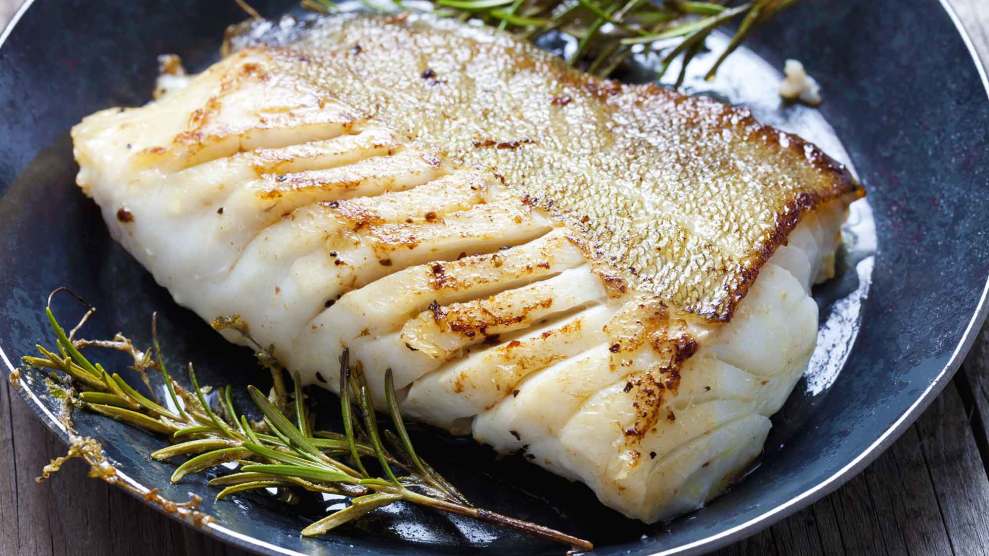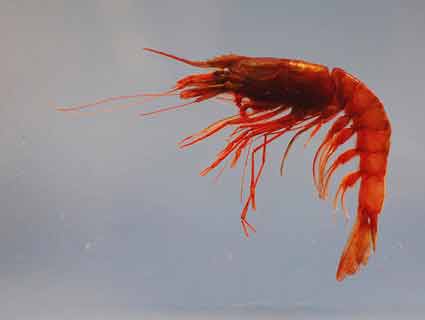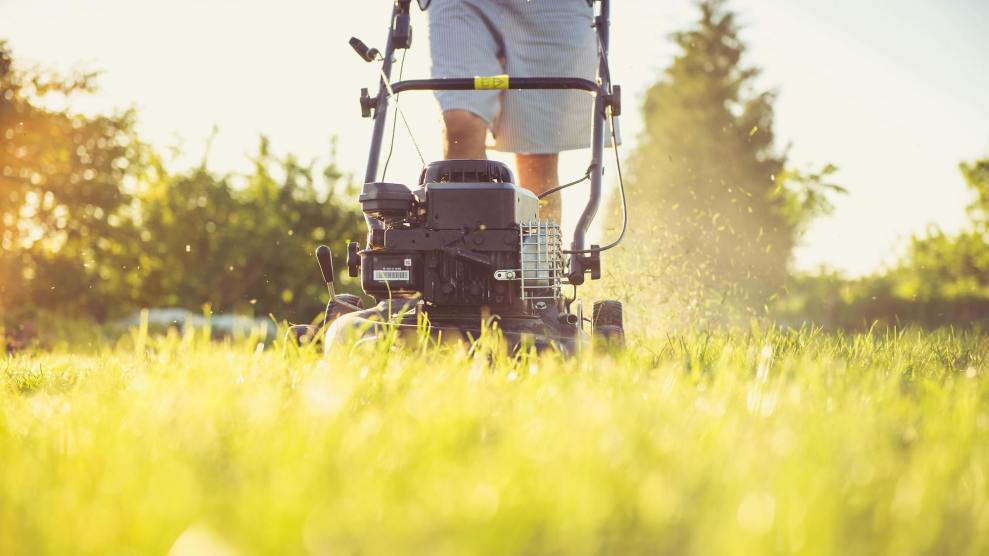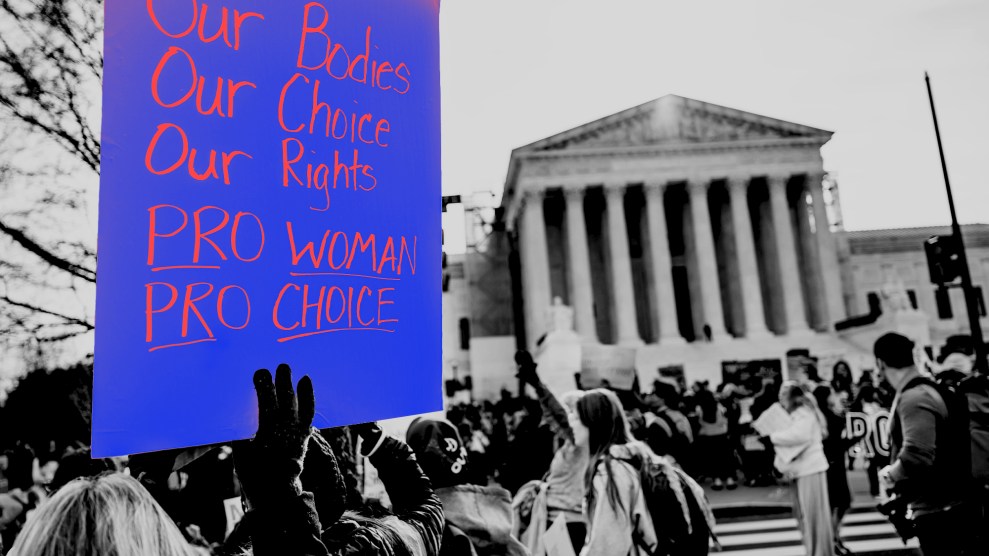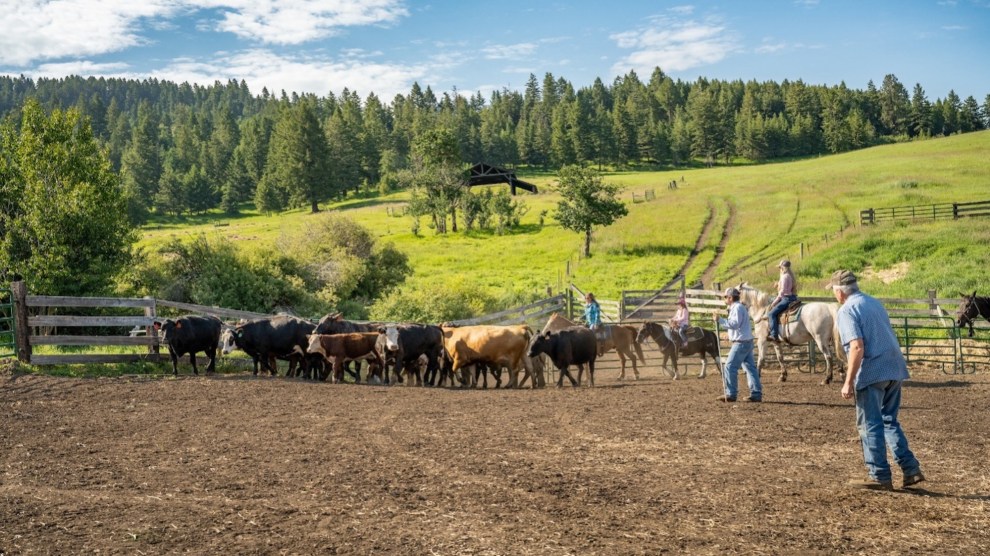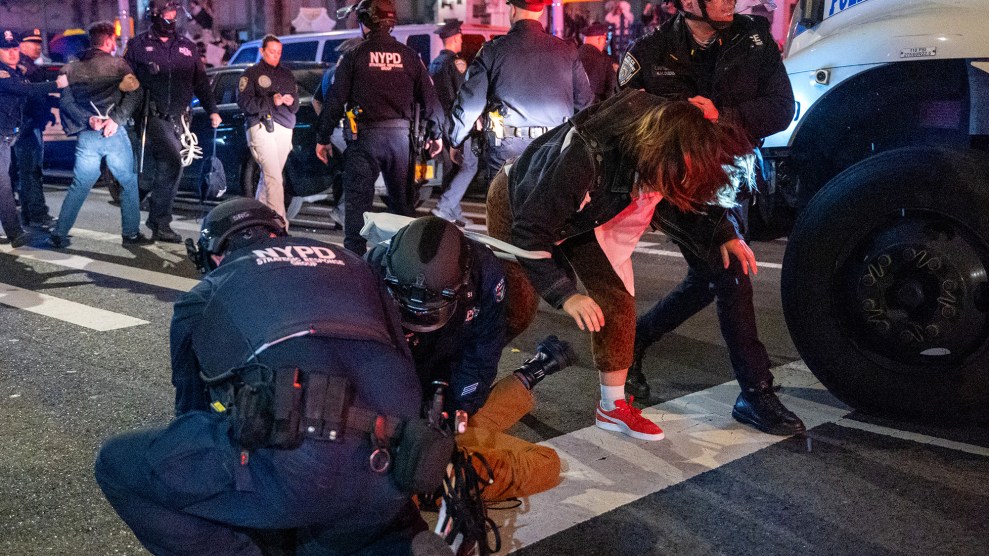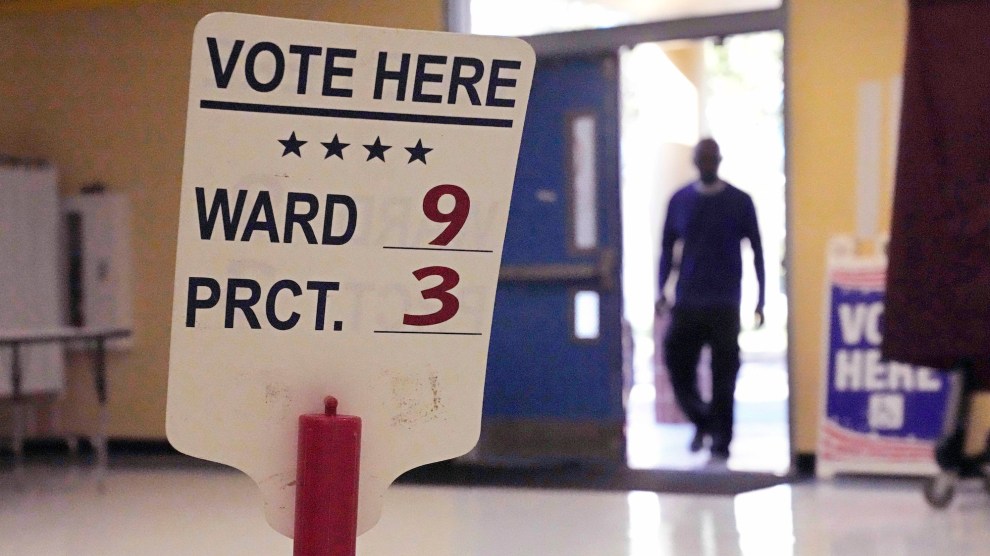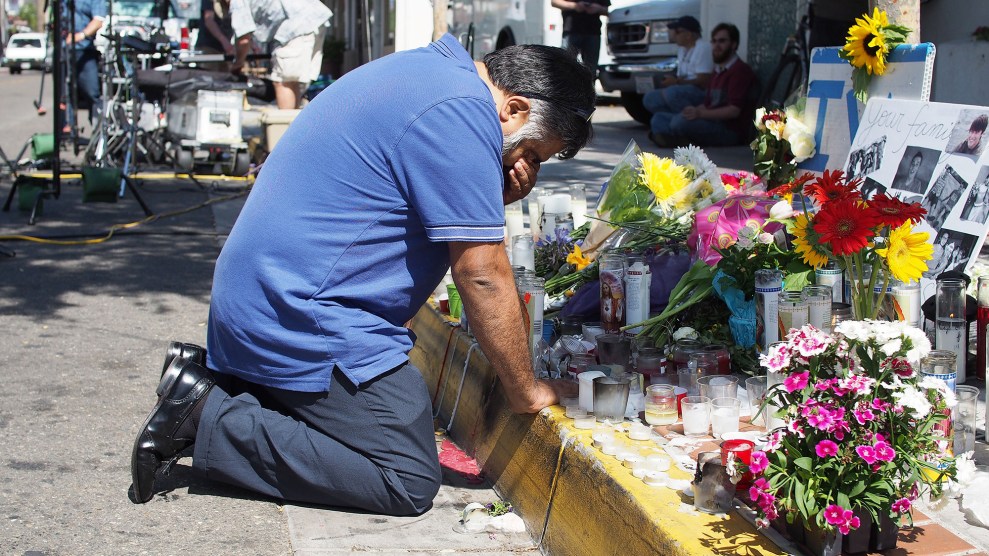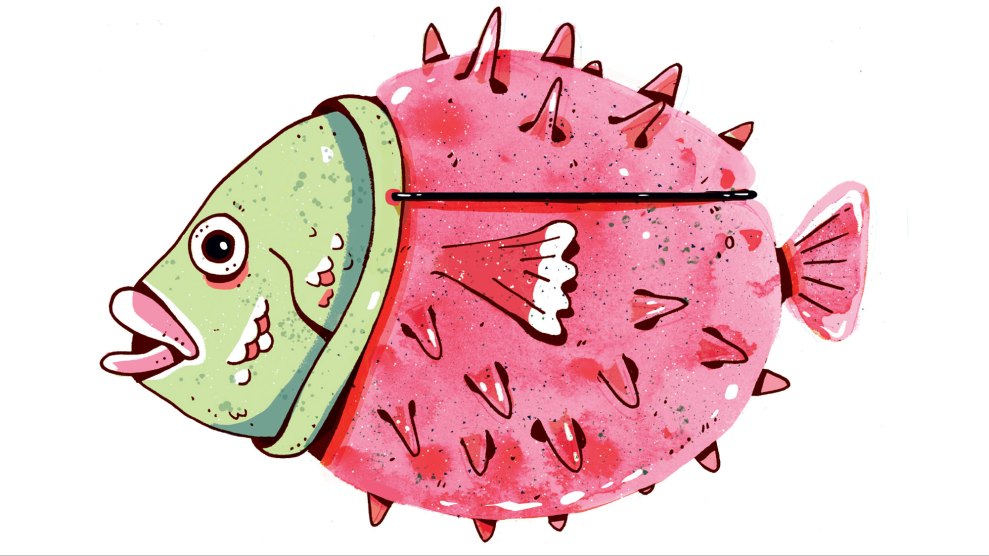
Illustration by Jackie Ferrentino
On a morning in early spring, at a dock alongside a popular Central Florida boardwalk, Jason DeLaCruz helps his crew unload 11,700 pounds of grouper, red snapper, and bycatch from the boat The Blackjack. The six men work quickly to grade the day’s catch, plopping each fish into sturdy cardboard vats layered with ice. They have good reason to hurry: They’ll need to jump through several extra hoops—more than most operations—before sending it all to market.
That’s because, in addition to running his Madeira Beach seafood operation, DeLaCruz is the executive director of a nonprofit conservation agency called Gulf Wild. By affixing a data tag onto the gill of each fish, Gulf Wild captains provide consumers with details about the location of the catch, which boat pulled it in and with what gear, and even the quality of the water it swam in. The information is uploaded into an online “Transparensea” database, which handlers then update along each step of the fish’s journey to the dinner table.
That seems like great lengths to go for some local grouper. But for Gulf Wild’s 50 or so boat captains, the extra steps are worth it, part of a growing effort to combat seafood fraud.
It’s common in the food industry to boost profits by misleading customers about an animal’s origins, but this kind of fraud is especially rampant when it comes to seafood. From 2010 to 2012, the conservation agency Oceana conducted DNA tests on seafood in 21 states and found that one-third of the samples had been mislabeled. A whopping 87 percent of the “red snapper” samples were bogus, swapped in for cheaper fish like tilapia or rockfish. Florida’s prized grouper is also often replaced with tilapia or even farmed Asian catfish. Most customers can’t tell the difference, but mislabeling hurts people at both ends of the supply chain: Tilapia mislabeled as grouper can cost the consumer $4 more per eight-ounce fillet at the grocery store, and $12 extra per fillet at a restaurant. And fishermen who respect conservation quotas wind up selling true grouper at a deflated price.
Mislabeling also means that seafood billed as “local” or “sustainably sourced” can be far from it. A recent Tampa Bay Times investigation found, again through DNA testing, that “Florida blue crab” purchased at one Tampa trattoria actually came from the Indian Ocean. Shrimp marketed elsewhere as “Florida wild-caught” grew up on a farm in Asia. Getting ripped off isn’t the only problem: Imported shellfish could be the product of slavery or harbor illegal antibiotic residues. A pregnant woman steering clear of mercury-laden tilefish, for instance, might inadvertently eat some when she thought she’d ordered snapper.
Gulf Wild started in 2010, as the farm-to-table movement encouraged people to find out where their food came from. Today, noted chefs like Mario Batali and Sean Brock and grocery stores like Wegmans and Whole Foods will only purchase traceable fish and shellfish. Last year, Gulf Wild boats pulled in more red snapper and grouper than any other operation—nearly a third of the US quota for each—meaning consumers can be more confident when eating those fish. The fishermen benefit, too: “We went from about $2.50 a pound [for red snapper] to $5.15 per pound back to the boat,” says Gulf Wild’s treasurer, Buddy Guindon, “allowing us to put a little bit more in the fishermen’s pockets for doing a little bit more work.”
Similar programs are cropping up elsewhere: In Massachusetts, Red’s Best “reduces the distance between you and your fisherman” with its QR codes; Seattle-based Trace Register tracks seafood “lot by lot, shipment by shipment.” But 90 percent of the seafood eaten in the United States is imported, and typically untraceable. According to officials with the National Oceanic and Atmospheric Administration, global seafood fraud depresses prices for law-abiding seafood operations—resulting in $10-$20 billion in annual losses.
In 2015, a presidential task force proposed requiring importers to produce traceability data for the 16 species most often fished and sold illegally. That data wouldn’t be shared with consumers. Which is too bad, since, as many fishermen will reiterate, consumers are the ones who influence the market. With electronic tags, says DeLaCruz, the people buying and eating seafood “are getting a foothold back. They’re beginning to see the standard they expect in their fish.” The larger question is: Will they fork over a little more for traceable seafood, or continue to fall for a fishy story?
